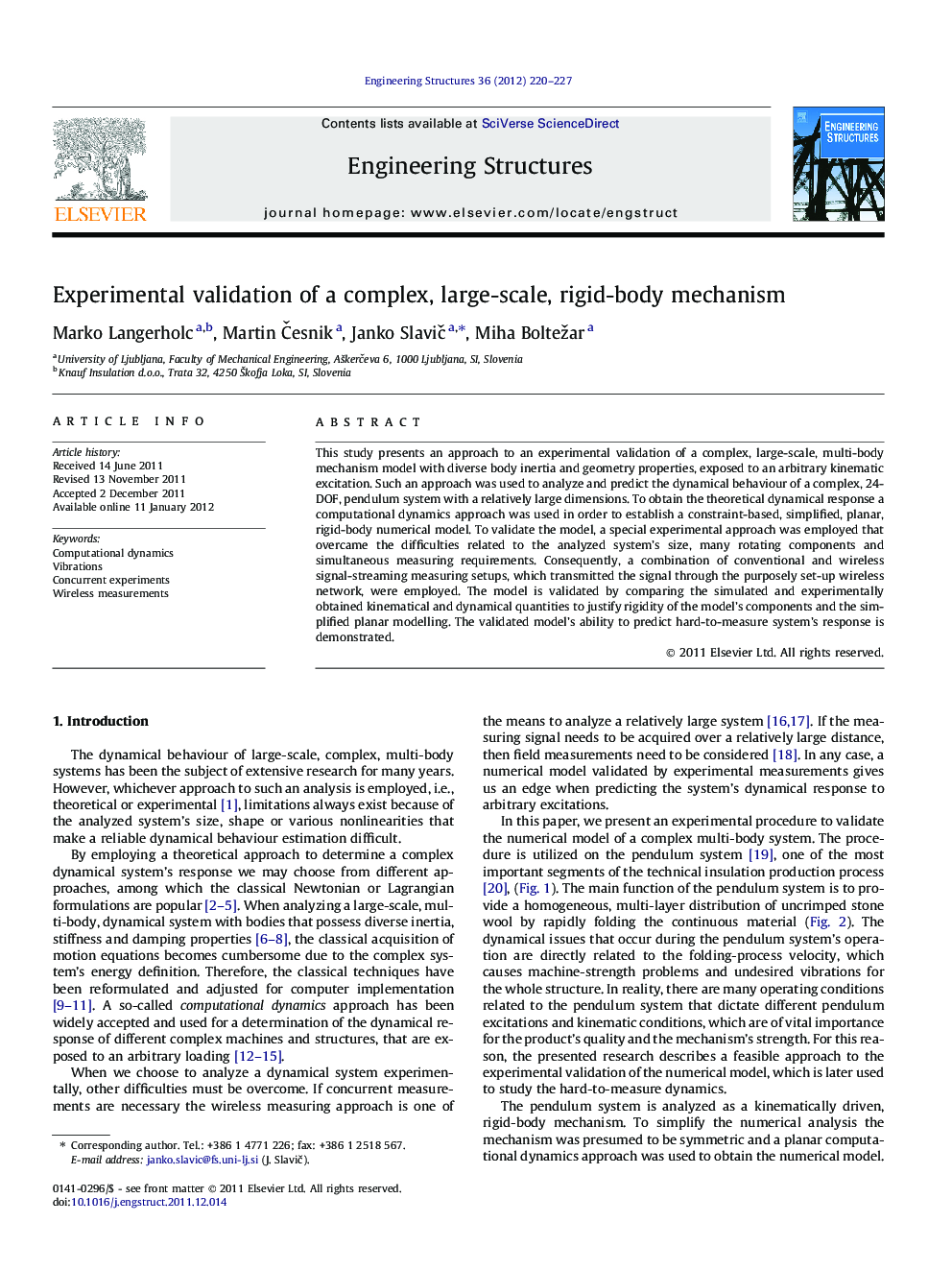| کد مقاله | کد نشریه | سال انتشار | مقاله انگلیسی | نسخه تمام متن |
|---|---|---|---|---|
| 267860 | 504417 | 2012 | 8 صفحه PDF | دانلود رایگان |

This study presents an approach to an experimental validation of a complex, large-scale, multi-body mechanism model with diverse body inertia and geometry properties, exposed to an arbitrary kinematic excitation. Such an approach was used to analyze and predict the dynamical behaviour of a complex, 24-DOF, pendulum system with a relatively large dimensions. To obtain the theoretical dynamical response a computational dynamics approach was used in order to establish a constraint-based, simplified, planar, rigid-body numerical model. To validate the model, a special experimental approach was employed that overcame the difficulties related to the analyzed system’s size, many rotating components and simultaneous measuring requirements. Consequently, a combination of conventional and wireless signal-streaming measuring setups, which transmitted the signal through the purposely set-up wireless network, were employed. The model is validated by comparing the simulated and experimentally obtained kinematical and dynamical quantities to justify rigidity of the model’s components and the simplified planar modelling. The validated model’s ability to predict hard-to-measure system’s response is demonstrated.
Figure optionsDownload as PowerPoint slideHighlights
► Analysis of a large-scale mechanism dynamics is executed.
► Multi-body system dynamics simplifications for large scale mechanisms are made.
► Model is validated with concurrent use of wireless and conventional measurement techniques.
► Validated model is used for the analysis of hard to measure dynamics.
Journal: Engineering Structures - Volume 36, March 2012, Pages 220–227